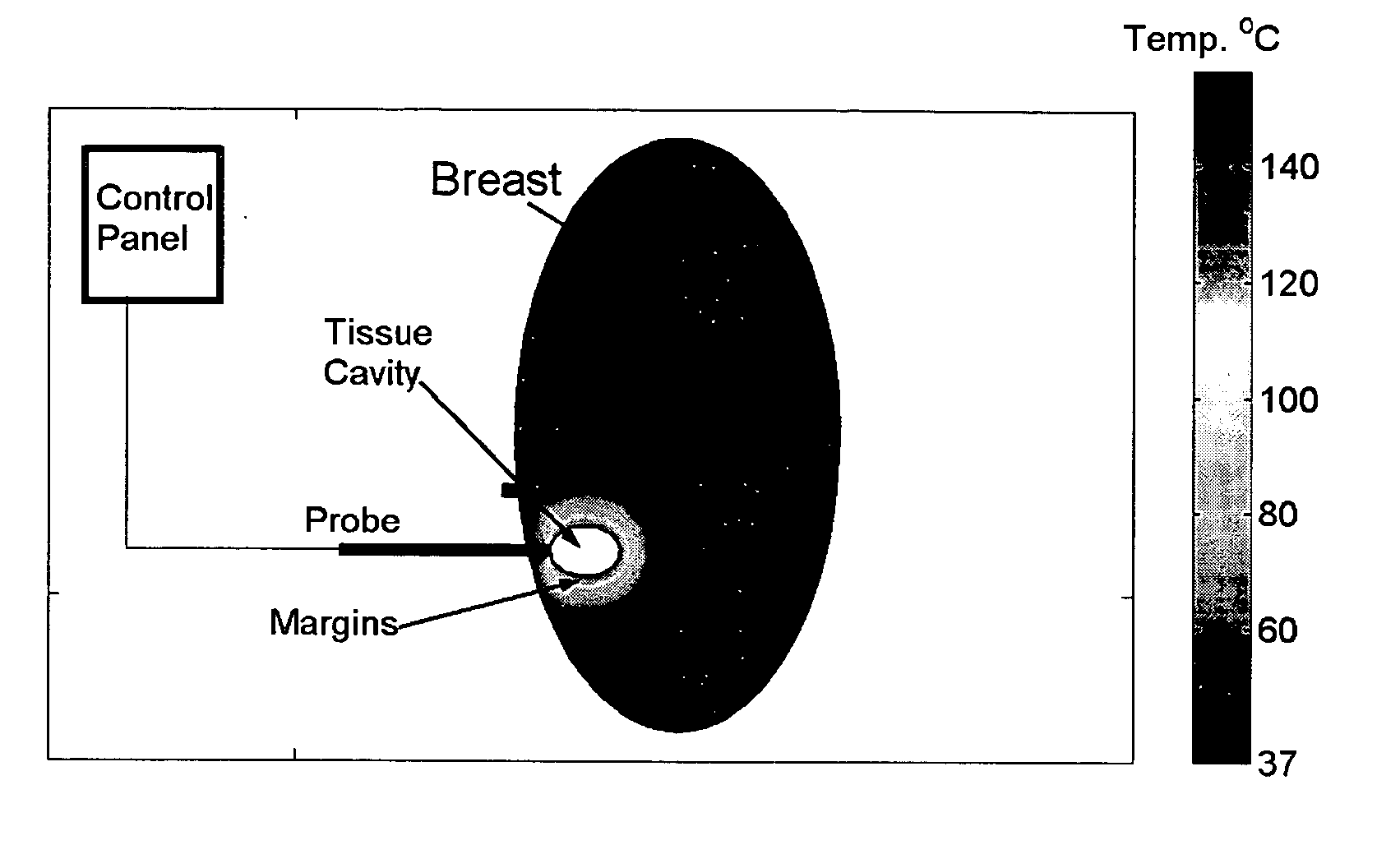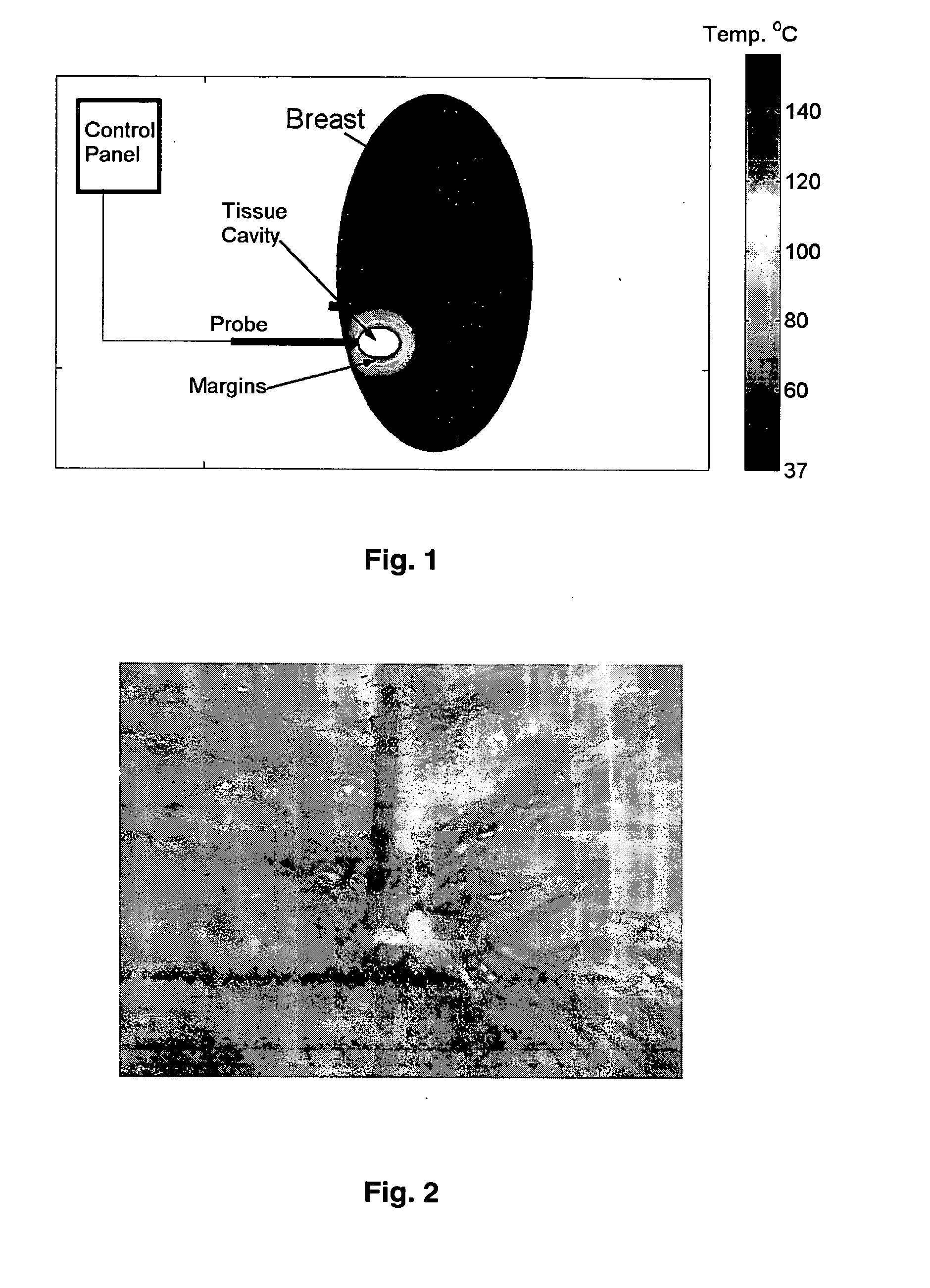Minimally invasive diagnosis and treatment for breast cancer
a breast cancer, minimally invasive technology, applied in the field of cancer treatment, can solve the problems of affecting the detection affecting the accuracy of the lesion recognition, so as to achieve the effect of reducing the fluorescen
- Summary
- Abstract
- Description
- Claims
- Application Information
AI Technical Summary
Benefits of technology
Problems solved by technology
Method used
Image
Examples
example 1
[0068] MRI-directed Interstitial Laser Photocoagulation
[0069] Preliminary results of MRI-directed interstitial laser photocoagulation in 30 patients with breast cancer indicated that the procedure was well-tolerated and side effects were similar to those of routine stereotactic needle biopsy. Each patient has between one and five ablation zones for a total of 68 treatment zones. When the entire 10-minute treatment session was completed, the pathology correlation determined effective cell death in all cases. The histologic determination of treatment zones by proliferating cell nuclear antigen (PCNA) staining within the tumor matched the MRI estimates of zone size in all cases (data not shown).
example 2
[0070] Excision and Ablation of Margin in Mastectomy Specimens
[0071] Normal tissue was excised, under IRP-approved protocol, from 39 sites on mastectomy specimens. The sites were then ablated with radiofrequency to measure the margin produced around the cavity site (FIG. 2).
[0072] Tumors were excised percutaneously from 10 patients using the Mammotome®. The margin was ablated and then the site was excised for pathological examination. Adequate margins were obtained on all specimens examined (data not shown).
example 3
[0073] Excision and Ablation of Margin as Alternative to Excision and Radiation Therapy
[0074] Because of debilitation of the patient and / or refusal of the patient to undergo radiation therapy, the treatment protocol of excision and radiation therapy is not a viable procedure. In 10 such patients, standard excision followed by ablation of the margin with radiofrequency was performed (FIG. 3A). The patients were followed-up closely over a 2-year period or less with no recurrences in any of them.
[0075] In one such instance an elderly woman with severe pulmonary disease who had a large right breast cancer removed was treated with radiofrequency ablation and follow-up. This patient demonstrates none of the typical visible side-effects of radiation therapy including retraction, swelling, erythema or browning of the skin. Two year mammograms show no evidence of recurrence (FIG. 3B). Two-year follow-up is emphasized since most recurrences for breast tumors occur in the first 2 years after...
PUM
 Login to View More
Login to View More Abstract
Description
Claims
Application Information
 Login to View More
Login to View More - R&D
- Intellectual Property
- Life Sciences
- Materials
- Tech Scout
- Unparalleled Data Quality
- Higher Quality Content
- 60% Fewer Hallucinations
Browse by: Latest US Patents, China's latest patents, Technical Efficacy Thesaurus, Application Domain, Technology Topic, Popular Technical Reports.
© 2025 PatSnap. All rights reserved.Legal|Privacy policy|Modern Slavery Act Transparency Statement|Sitemap|About US| Contact US: help@patsnap.com



